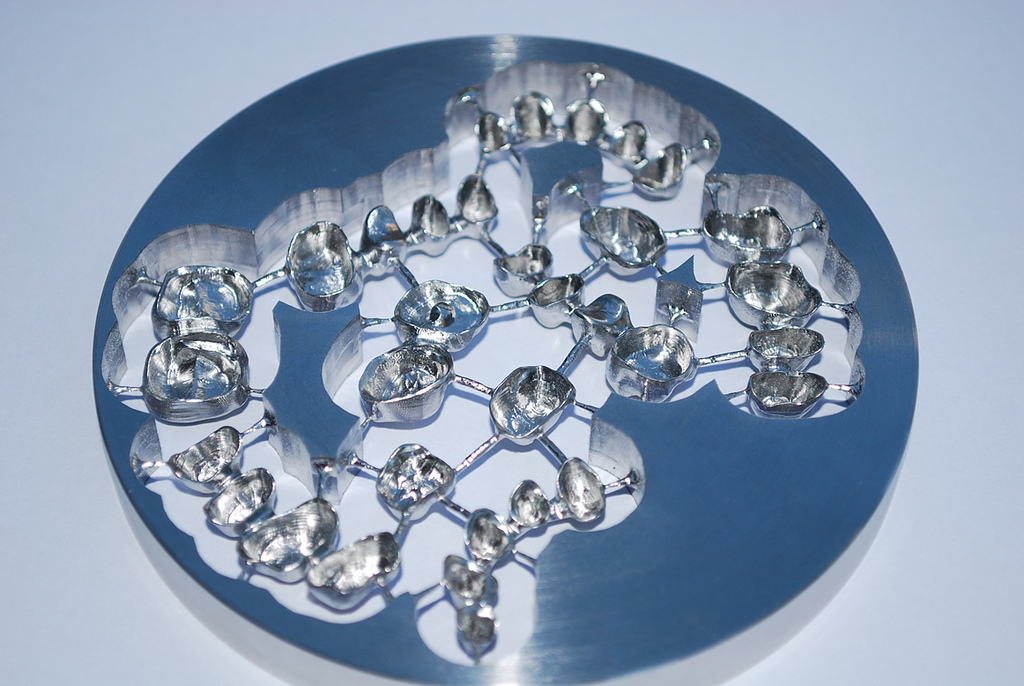(Inside Science) — Eighty-five percent of the matter in the universe is thought to be “dark” matter invisible to humans and our scientific instruments. But scientists don’t know what dark matter is made of or how it was created in the early universe.
Now, a group of researchers has proposed a new recipe for the mysterious substance: a dark matter particle colliding with an ordinary matter particle and transforming it into a new dark matter particle. This process would have continued until the universe settled at the amount of dark matter present today.
“There are zillions of models to explain dark matter,” said Torsten Bringmann, a physicist at the University of Oslo in Norway and one of the authors of the new paper, published in November in the journal Physical Review Letters. “If you write down a model, it should contain a mechanism of how to produce dark matter, how to explain the one thing we know about dark matter — namely, exactly how much there is.”
Scientists know dark matter must exist in part because the outer edges of galaxies are spinning faster than expected — so fast that, based on the amount of ordinary matter in galaxies, galaxies should rip apart. But fortunately for us, they still exist. So, there must be some unseen matter helping to hold them together.
Dark matter has also been indirectly observed in clusters of galaxies, which also shouldn’t hold together, as well as in fluctuations in radiation from the early universe known as the cosmic microwave background.
“It’s pretty much convincing that there is some form of dark matter in the universe, and that it actually forms a very important component of matter,” said Geneviève Bélanger, a physicist at the Annecy-le-Vieux Laboratory of Theoretical Physics in France, who did not contribute to the new paper.
Bringmann said that about 20 years ago, physicists thought dark matter was most likely made of hypothesized but unobserved weakly interacting massive particles, or WIMPs. These particles would interact with ordinary matter via the weak force, which is one of the four fundamental forces in the universe. While it’s actually stronger than gravity, the weak force only has influence at the subatomic level.
One way WIMPS might have been created and destroyed in the early universe is by a mechanism called “freeze-out.” According to this theory, dark matter WIMPs would be packed together with ordinary matter in a dense, hot space in the early universe, allowing two dark matter particles to collide and turn into two regular particles, and vice versa.
As the universe expanded and cooled, regular matter particles wouldn’t have access to enough energy to collide and create dark matter. The chances of dark matter particles colliding would also approach zero. “If the universe is expanding so quickly, the chances are getting slimmer and slimmer that [dark matter particles] meet,” said Bringmann. Over time, the amount of dark matter in the universe would stabilize.
The possible existence of WIMPs is also suggested by separate theories in particle physics. But physicists have been using particle colliders and underground detectors to search for WIMPs for years, and they haven’t spotted any yet.
This doesn’t mean WIMPs don’t exist. Howard Baer, a physicist at the University of Oklahoma, who didn’t contribute to the paper, said it’s possible the WIMPS exist but are avoiding detection. But Bélanger said that because nobody has seen a WIMP yet, “people are starting to explore alternatives to explain this dark matter.”
One alternative explanation for dark matter production is a “freeze-in” mechanism. This hypothesis suggests that little to no dark matter existed at the start of the universe, and standard matter and dark matter particles are connected by some new, undiscovered force that is weaker than the weak force. In the freeze-in case, standard matter particles would collide and produce dark matter over time, eventually stabilizing at the amount of dark matter in the universe today.
Like the freeze-in mechanism, the new mechanism Bringmann and colleagues propose starts with a small concentration of dark matter particles and interactions between particles that are weaker than the weak force. But instead of claiming standard matter collisions create dark matter, they suggest that a dark matter and standard matter particle could collide and yield two dark matter particles. This would lead to exponential growth in the amount of dark matter, as an increasing amount of dark matter collides with regular matter and produces more and more dark matter. “Once you get into this sort of self-reproductive stage, it will just explode,” said Bringmann of the proposed mechanism.
Bélanger said that the mechanism is “a perfectly viable alternative, and it’s interesting to consider.”
The researchers now must fit this mechanism to a larger model of the evolution of dark matter in the early universe, said Nausheen Shah, a physicist at Wayne State University in Detroit, Michigan, who did not contribute to the new paper. Shah also said that while there needs to be more model building, the authors do introduce the basics for an intriguing simple model in the paper that could work.
To test a model, researchers can search for what the model implies they should see in the universe today. Bringmann said that it might be possible to support the simple model by detecting particular distortions in the cosmic microwave background.
This story was published on Inside Science. Read the original here.
Note: This article have been indexed to our site. We do not claim legitimacy, ownership or copyright of any of the content above. To see the article at original source Click Here













